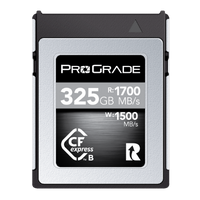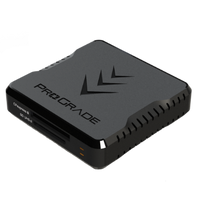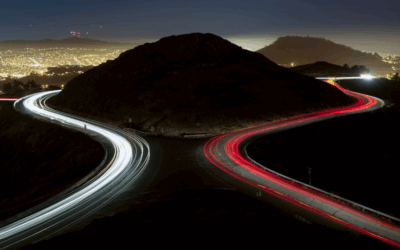It’s finally happening! After some soul-searching and careful contemplation, you have decided to take the next step. You have chosen to pursue your passion and turn your hobby into a career – a professional photography career. Congratulations!
And, despite the excitement, your two feet are firmly on the ground. You understand the road ahead. You know that establishing yourself among your peers will not happen overnight, and you are ready to work hard to achieve your goals.
At this point, you have probably read several blog posts, watched numerous YouTube videos, and perhaps even consulted some pros. Yet, you feel like something is missing, or something just doesn’t add up.
Here’s the problem with most advice circulating online (3 problems, to be exact):
Many advisors will tell you to start with something you’re passionate about; choose a niche at the junction of passion, skills, and experience. It helps push through failure and achieve consistency.
At first glance, this advice is nice and sounds excellent, profound even, but the model has a flaw. It’s missing three major components: your brand, value for the market, and the leverage you have. The niche should be derived from that.
1. As a photographer, you are the brand.
However, a photographer as a brand is not just your signature and logo. Instead, your brand is the personality of your photography and a promise to your customers.
Ask yourself: What are your values, how do you want to communicate through your images, and what do you want people to feel when they look at your photos?
Your brand should be distinguished from your competitors so it can be easily communicated. Your brand is not merely a niche. It’s not a “wedding photographer,” “travel photographer,” or a “sports photographer.” In fact, if you wish to do so, a well-built brand allows you to be all that simultaneously.
Your brand attracts customers and the customer’s willingness to buy. So definitely take time to dive deeper into branding, but at the same time, don’t overly obsess about it. Keep in mind that a brand is a living thing. It grows with you. It evolves and shapes as you evolve. You just have to be conscious of it. So creating your personal brand is more about discovering it and bringing it out over time than actively building it at once.
2. The value you create for the market.
If you become a professional and start devoting a better part of your day to photography, it needs to keep the lights on. At least eventually.
Ask yourself: How can you monetize your skills right from the get-go?
Unfortunately, being passionate about a specific niche doesn’t automatically make it the right niche to enter.
Look honestly at the market and map out the existing pain points. Serving a need is a faster road to generating steady revenue as a newbie photographer than blindly following a passion.
Once the lights start flickering, your passion can only keep you going that long. A steady revenue stream, however, keeps the anxiety at bay and allows you to gradually transition toward a niche you are emotionally more drawn to.
3. The leverage you have in your life.
We all have our strengths and weaknesses. Your strengths are not only incredible skills you have and areas you have the most experience. It is also about levers you can pull, connections you have, and potentially valuable insider information you’ve gathered.
Ask yourself: How are you uniquely positioned, and how can you leverage any and everything in your life that would give you an advantage?
Identifying potential advantages and incorporating them into your business plan is essential. Focus not on what you want to be seen as an expert at but on what you have a proven track record of succeeding at.
Remember, the gear you have can also be your advantage. Perhaps you have a unique set of vintage lenses giving your images a distinctive soap-bubble bokeh that will leave everyone breathless? So when brainstorming, consider absolutely everything.
Upgrade Your Gear Based on Your Niche
When you’re done with all the brainstorming and clearly understand where you are heading, it’s time to upgrade your gear.
Photography is a broad field, and there is a lot of equipment to cover everything. You, however, don’t need it all. Let the niche dictate the necessities.
For example, when you don’t shoot portraits in a studio, there’s no need to build scenes for your subjects. Hence, there’s no need for backdrops. Instead, the world is your backdrop.
Similarly, the lighting needs of a product photographer differ from those of a portrait photographer. If you do one or the other, don’t spend your money buying specific lighting for both.
That said, some things are universal. So-called essential upgrades when you start a photography business!
1. Professional-Grade Camera
It’s true, an expensive camera won’t make you a better photographer. However, it will give you higher-quality images. Essential for commercial work, especially for larger prints. So ensure you don’t limit your talent and skill with a not-so-capable camera.
Higher-end cameras have larger sensors and more focus points. They have a better dynamic range and ISO. And the list goes on and on.
Professional photographers are expensive to hire, so people naturally have higher expectations of them. Image quality is always among these expectations. Whether it is real estate or landscape photography, you are expected to deliver high-quality images.
Pro-level cameras are also more forgiving. They produce higher-quality RAW files that capture all the information that land on the camera’s sensor. This means a wider dynamic range and a far greater color spectrum, which is not only essential for more flexibility in editing but can also save your life. If you happen to mess up something in a critical moment, chances are you can fix it in a post.
For example, the RAW format doesn’t “bake” the light source’s color temperature in the image. So, you can adjust it later without introducing any weird artifacts to your photo.
Further reading: 5 Benefits of Shooting Raw Photos
2. High-Quality Lenses
When you compare less expensive consumer-grade lenses to those professional photographers use, the differences are often subtle. The colors in the skin tones look practically the same, maybe just a little blotchier with consumer lenses. There’s very little difference in the color and tonal details in the highlights, perhaps the tones do not transition as smoothly on images shot with cheaper lenses, but other than that, they are near perfect. So why opt for more expensive lenses?
On the professional level, it’s often exactly these tiny details that make or break your game. As you know, details are where the devil is hiding.
The discrepancies may be barely noticeable, especially when you don’t have the two images side-by-side, but they’re still there. And the moment you do set the pictures next to each other, the clarity of an image shot with a top-notch lens is what most people will immediately notice.
Generally, the more expensive the lens is, the better build quality it will have. This results in a lens that is better at transmitting light and reducing scatter, also increasing contrast and saturation.
Not to mention, higher-end lenses are more reliable and amazing to work with. Focus rings don’t slip out of precision, no misaligned elements, no seizing up in freezing conditions, etc. A high-quality lens will last you a lifetime.
In conclusion, top-level lenses are ridiculously sharp, fast-focusing, and well-built. All crucial when out in the field. The last thing you want shooting for a client is a lens of inferior quality.
Need help choosing a lens perfect for your niche? Read our in-depth guide: Choosing the Perfect Lens for Your Personal Shooting Style
3. Reliable and Fast Memory Cards & Card Readers
Now that you’re a pro, time is money. Spending hours on hours transferring images means less time for shooting and editing. As a professional, you must eliminate all the bottlenecks in your workflow.
Moving from consumer-grade cards and readers to professional-grade memory cards and card readers will likely benefit you the most. The following drawing illustrates the difference.
An SDXC memory card with a read speed of 300MB/s can transfer the entire 64GB card to your computer in 3 minutes and 48 seconds, while a card with a read speed of 45MB/s takes almost 25 minutes.
The same goes for card readers. As a professional, you will often face tight deadlines and must get to editing fast. So when transferring your images from a memory card to your computer, workflow readers are your best friends.
Most consumer-grade card readers are more like adapters, meant to create a connection between a card and a computer. So they do nothing to speed up the data transfer process. In fact, when using fast memory cards, they actually slow you down.
Similarly, most data cables that come with cameras max out at 480Mbps. That is 0.05GB/s. Meanwhile, a workflow reader that utilizes the UHS-II bus and USB 3.2 gen 2 can transfer data at 1.25GB/s. That is 2,500% faster. To put that into perspective: what takes a regular data cable an hour to complete, a workflow reader can do in less than 3 minutes.
Besides the speed, high-quality memory cards and workflow readers are much more reliable. It’s unthinkable to walk up to a client and tell them you lost a bunch of their wedding photos because of a corrupt memory card or an error caused by a card reader.
Losing a photo or two from your vacation to Aruba is frustrating, but being unable to deliver images to a client is devastating. That is why ProGrade cards are also compatible with Recovery Pro software. So even if you accidentally delete some images or format the entire card in your camera, you can still restore the lost images using Recovery Pro.
For more information about memory cards and readers, check out our blog. It’s filled with many helpful articles. You may be interested in these:
- Your Guide to Different Memory Cards for Digital Cameras
- What Is a Workflow Reader and Why Do I Need One?
- What Do Symbols on Memory Cards Mean?
Key Takeaways:
Don’t break the bank. When buying new gear, don’t go overboard. Start with basics and then move to more specific items. Your budget also increases as you grow your photography business.
Take it slowly. Climb the ladder step by step. Hobby photographers often have the skills, but they lack experience. During their careers, professionals have seen practically everything. They’ve encountered different problems and can now anticipate potential issues before they arise. At the same time, beginners are often caught off-guard when unforeseen circumstances surface. Hence, it’s natural for people to trust and hire professionals over amateurs. Don’t try to jump over your shadow. Building credibility takes time, and oftentimes all it takes is just being in the business.
Starting a photography business can seem daunting, but taking smaller steps instead of giant leaps helps break it into easily manageable chunks.
Good luck, and remember to have fun!
ProGrade Digital manufactures highly-reliable and lightning-fast memory cards and workflow readers to satisfy the demands of professional photographers and videographers. Join the ProGrade family and take your professional photography workflow to a new level.





